Harris Ranch accounts for 1% of the US annual beef kill, making it the fourth-largest feedlot in the US.
At any one time, it has the capacity to hold 120,000 cattle and the company kills 1,100 head per day, five days a week.
Cattle – all heifers and steers – are finished within 120 days of arrival.
Cattle are tagged, clipped, vaccinated and pregnancy-tested (where appropriate) upon arrival.
They are separated into lots based on their sex, type and size.
Rations
While animals used to be killed at 20 months of age due to Japanese export requirements, they are now up to 30 months.
They spend 10 days on a starter ration, 10 days on an intermediate ration and the rest of the time on a finishing ration.
The main component of the feed is corn from the Midwest.
The ranch takes in two train loads every month, each bringing 13,000t.
The finishing ration is 85% corn and 10% alfalfa
Despite the fact that feedlots in the Midwest have corn nearby, they have colder winters, which gives Californian finishers a better average daily liveweight gain.
The corn is steam flaked. Alfalfa is used for fibre in the ration.
There are nine ingredients in the ration: corn, alfalfa, molasses, vitamin A, vitamin E, limestone, copper, CDS (which is a liquid by-product from ethanol production) and a pro-biotic.
The finishing ration is 85% corn and 10% alfalfa. The mill runs 18 hours per day, so expansion of the feedlot is limited unless a new mill is installed.

The feed mill at Harris Ranch. \ Odile Evans
Average slaughter weights are 1,250lb (570kg).
The yield from live to rail is around 64% and the yield from rail to box is 70%.
Harris Ranch has a program to feed information back to breeders to improve genetics based on kill-out weights called Partnership for Quality.
Beef-bred animals have an average daily liveweight gain of 4lb/day (1.81kg/day), while Holsteins are at 2.8lb/day (1.27kg/day).
Each animal has 6in of bunk space.
There are one million dairy cows in an 80-mile radius from the feedlot, meaning there is an ample supply of Holsteins.
Ten percent of the cattle come from Mexico and the rest are from anywhere west of the Rockies.
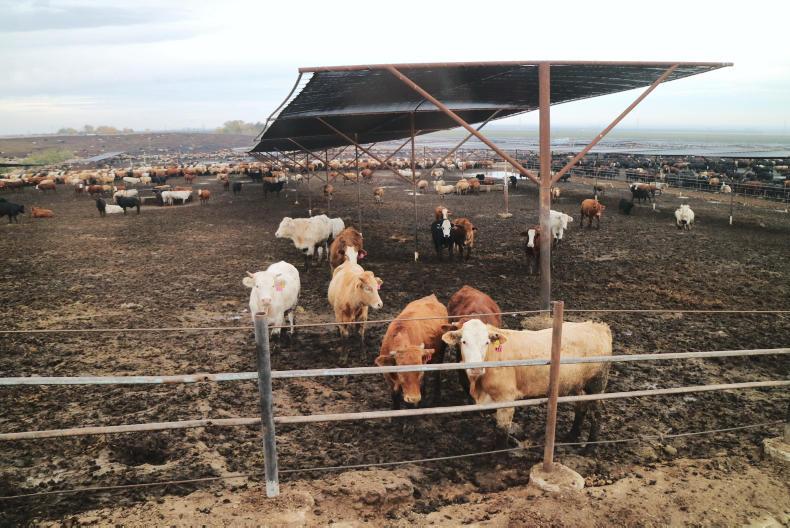
Beef-bred animals have an average daily liveweight gain of 4lb/day. \ Odile Evans
In the mornings, a group of 20 cowboys ride through the pens to check animals for signs of disease.
If they need to be isolated, a yellow tag is put in their ear and they are moved to one of seven hospital pens on the site, which have a crew to regularly temperature-test and treat.
Dust and pneumonia are the main health problems.
Sprinkler systems are used from May to October to keep dust down and during the really hot times the feed is adjusted to hay rather than corn.
When the Irish Farmers Journal visited in the first week of December, a new bio-fuel tank was being installed to run the fleet of 70 trucks.
Read more
The new gold rush – water
Watch: US cow prices at their lowest in 20 years
Harris Ranch accounts for 1% of the US annual beef kill, making it the fourth-largest feedlot in the US.
At any one time, it has the capacity to hold 120,000 cattle and the company kills 1,100 head per day, five days a week.
Cattle – all heifers and steers – are finished within 120 days of arrival.
Cattle are tagged, clipped, vaccinated and pregnancy-tested (where appropriate) upon arrival.
They are separated into lots based on their sex, type and size.
Rations
While animals used to be killed at 20 months of age due to Japanese export requirements, they are now up to 30 months.
They spend 10 days on a starter ration, 10 days on an intermediate ration and the rest of the time on a finishing ration.
The main component of the feed is corn from the Midwest.
The ranch takes in two train loads every month, each bringing 13,000t.
The finishing ration is 85% corn and 10% alfalfa
Despite the fact that feedlots in the Midwest have corn nearby, they have colder winters, which gives Californian finishers a better average daily liveweight gain.
The corn is steam flaked. Alfalfa is used for fibre in the ration.
There are nine ingredients in the ration: corn, alfalfa, molasses, vitamin A, vitamin E, limestone, copper, CDS (which is a liquid by-product from ethanol production) and a pro-biotic.
The finishing ration is 85% corn and 10% alfalfa. The mill runs 18 hours per day, so expansion of the feedlot is limited unless a new mill is installed.

The feed mill at Harris Ranch. \ Odile Evans
Average slaughter weights are 1,250lb (570kg).
The yield from live to rail is around 64% and the yield from rail to box is 70%.
Harris Ranch has a program to feed information back to breeders to improve genetics based on kill-out weights called Partnership for Quality.
Beef-bred animals have an average daily liveweight gain of 4lb/day (1.81kg/day), while Holsteins are at 2.8lb/day (1.27kg/day).
Each animal has 6in of bunk space.
There are one million dairy cows in an 80-mile radius from the feedlot, meaning there is an ample supply of Holsteins.
Ten percent of the cattle come from Mexico and the rest are from anywhere west of the Rockies.

Beef-bred animals have an average daily liveweight gain of 4lb/day. \ Odile Evans
In the mornings, a group of 20 cowboys ride through the pens to check animals for signs of disease.
If they need to be isolated, a yellow tag is put in their ear and they are moved to one of seven hospital pens on the site, which have a crew to regularly temperature-test and treat.
Dust and pneumonia are the main health problems.
Sprinkler systems are used from May to October to keep dust down and during the really hot times the feed is adjusted to hay rather than corn.
When the Irish Farmers Journal visited in the first week of December, a new bio-fuel tank was being installed to run the fleet of 70 trucks.
Read more
The new gold rush – water
Watch: US cow prices at their lowest in 20 years








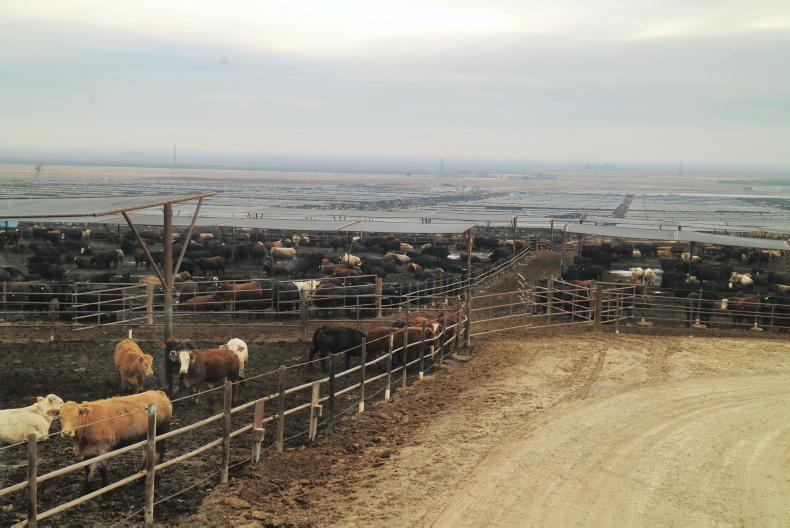
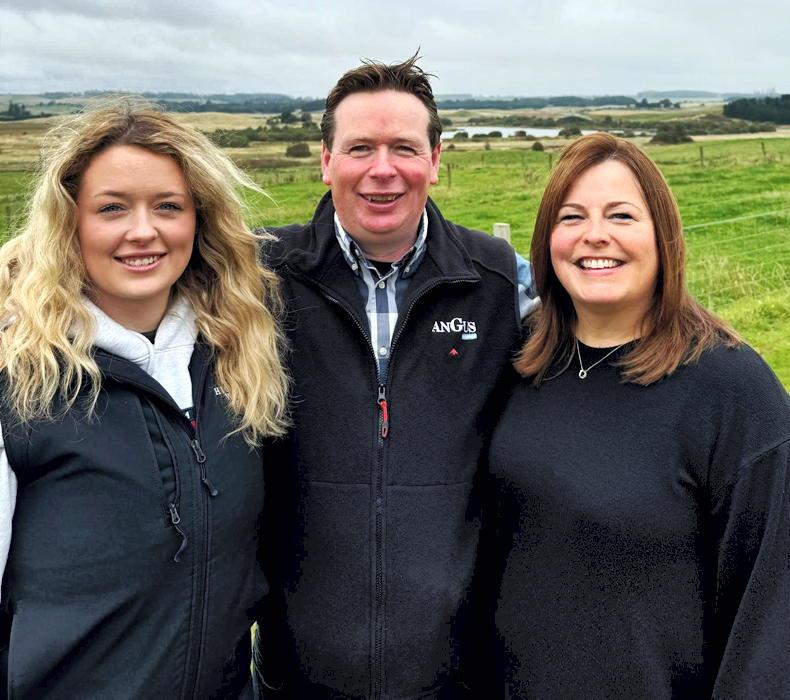
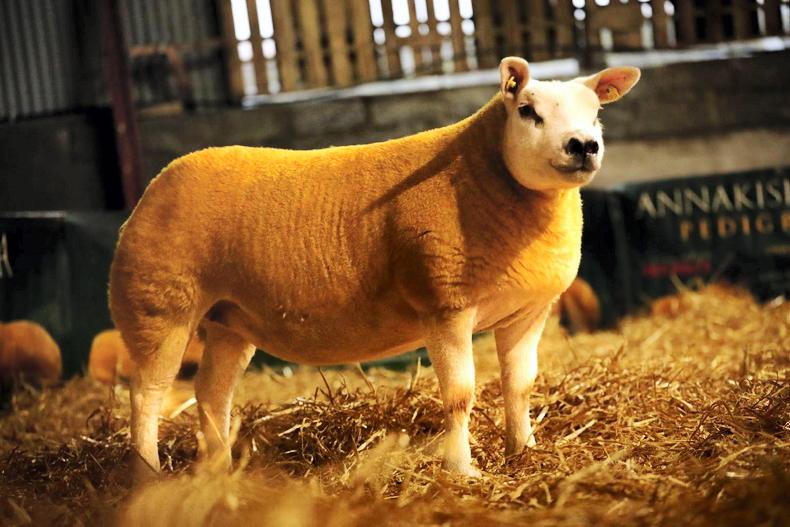
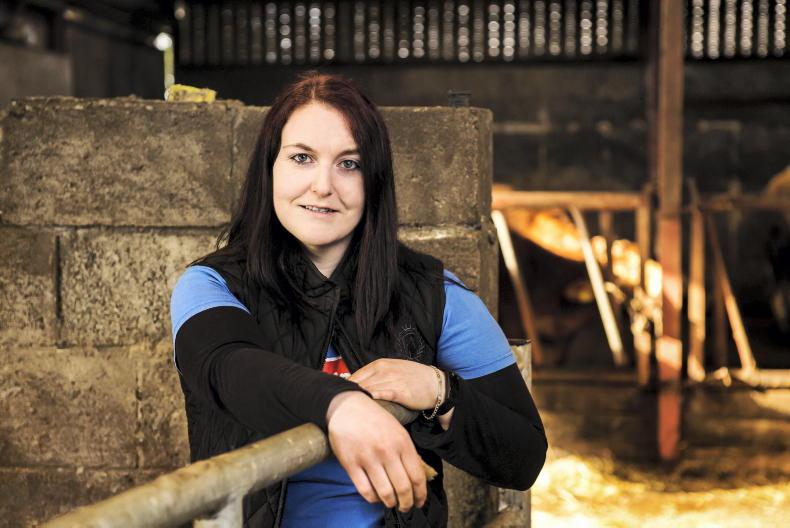
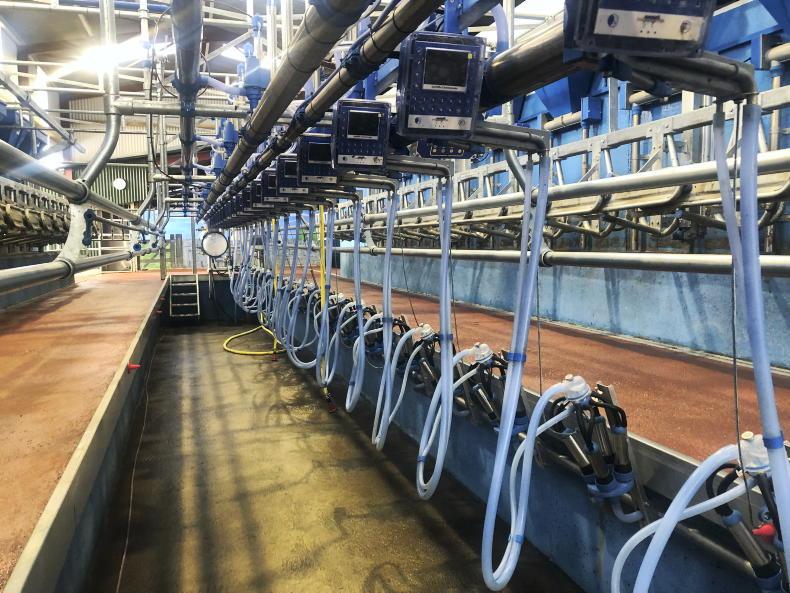
SHARING OPTIONS